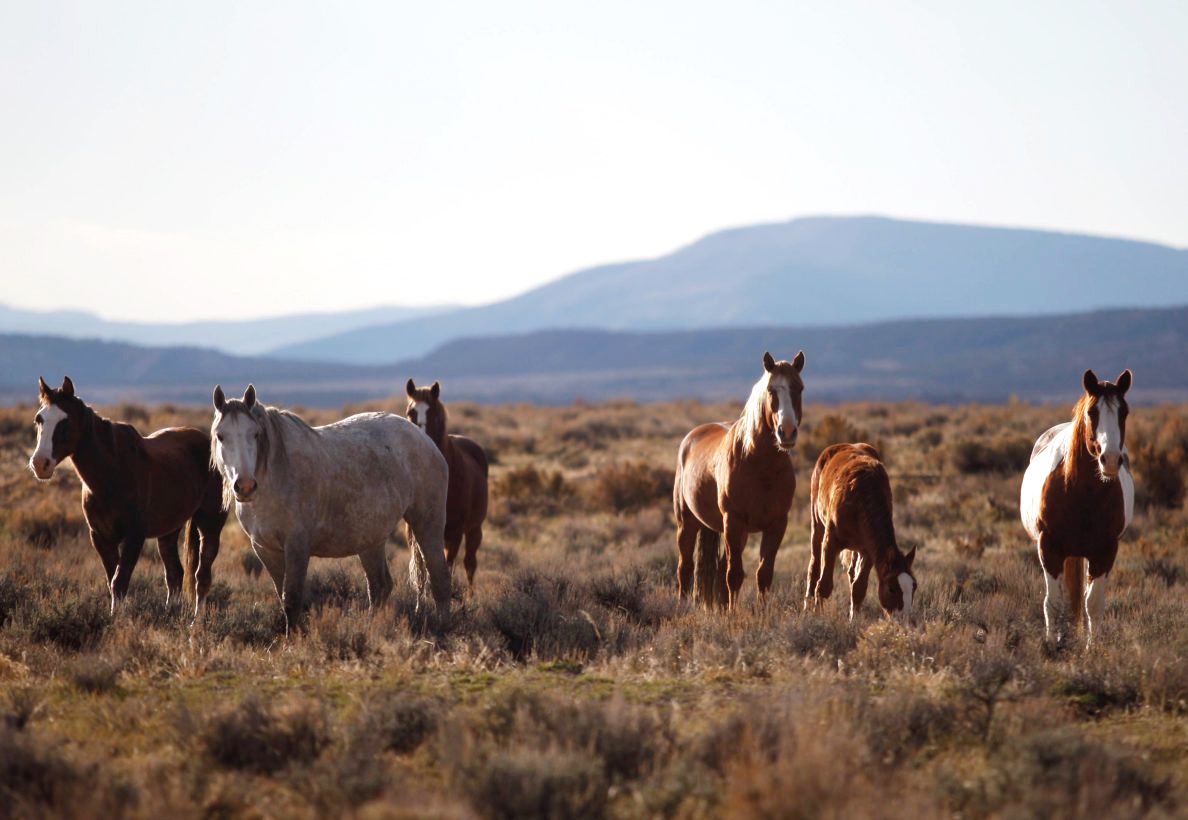

Our nation’s management of wild horses has been a long-running debacle of poor execution layered over questionable intentions and flagging resolve. Those problems have been compounded by violence toward horses by ranchers and other private resource users. The latest incident involves an attack on a number of wild horses living on a ranch overseen by the philanthropist and wild horse advocate Madeleine Pickens.

Since 1971, the Bureau of Land Management (BLM) has had the task of managing wild horses, who are now classed, for administrative purposes, into 179 Herd Management Areas in 10 western states. The bureau’s primary strategy over the past 20 years has largely consisted of rounding up and removing the animals from our public lands, ostensibly in an effort to protect the range from overgrazing.
The original plan was to adopt out horses to private parties—which has been fraught with its own set of problems—but the removals have happened at a volume that not even a spirited adoption program can offset. This has resulted in approximately 45,000 wild horses and burros being maintained in government-financed holding facilities throughout the U.S.
Because the captive horse management has cannibalized so much of the funding, the BLM has scarce funds for protecting horses remaining on the range, including fertility control programs that offer the only real hope of humane population management.
Last week, in an attempt to solve this financial crisis—a self-inflicted wound created by serial round-ups—a volunteer body called the National Wild Horse and Burro Advisory Board (the majority of whose members’ main focus is not and has never been, the humane treatment of wild horses) made a recommendation that the BLM consider euthanizing all unadopted horses in holding facilities. That’s a prescription for mass slaughter on an almost unimaginable scale and it would perhaps make the U.S. the biggest horse killing enterprise in the world.
While the advisory board has no legal authority to mandate action on the agency’s part, the agency will consider this recommendation, a sort of “Final Solution” cooked up by public-lands ranchers and their allies.
The Planet's Most Dangerous Predator Is Us https://t.co/KTKhEAzcda @albertarabbit @ejfoundation @OhioEnviro
— EcoWatch (@EcoWatch) September 13, 2016
In 2015, the Department of Interior’s Office of the Inspector General released a long-awaited investigative report, which found that the BLM had sold thousands of wild horses to a livestock hauler named Tom Davis who subsequently sold these horses to kill buyers. Though they are not being sold directly by the agency, wild horses are still going to slaughter by a variety of circuitous pathways. Sources at the Sugarcreek, Ohio, livestock auction last week documented BLM freeze-branded horses, in very poor condition, being sold to kill buyers.
Our nation’s wild horses deserve better than this sort of mismanagement and abuse, and an attitude that they are throwaway objects. A sensible program must be grounded on controlling the population on the range through fertility control, obviating the need for dangerous round-ups that betray the national interest in protecting horses, and ending wasteful spending that ultimately solves no problems and just builds a massive captive wild horse program.
This headlong and heedless advisory committee recommendation should be summarily rejected. But it’s so outrageous and overreaching that it may be just the kick in the pants that Congress and the agency need to overhaul the entire broken and battered program.

 233k
233k  41k
41k  Subscribe
Subscribe 